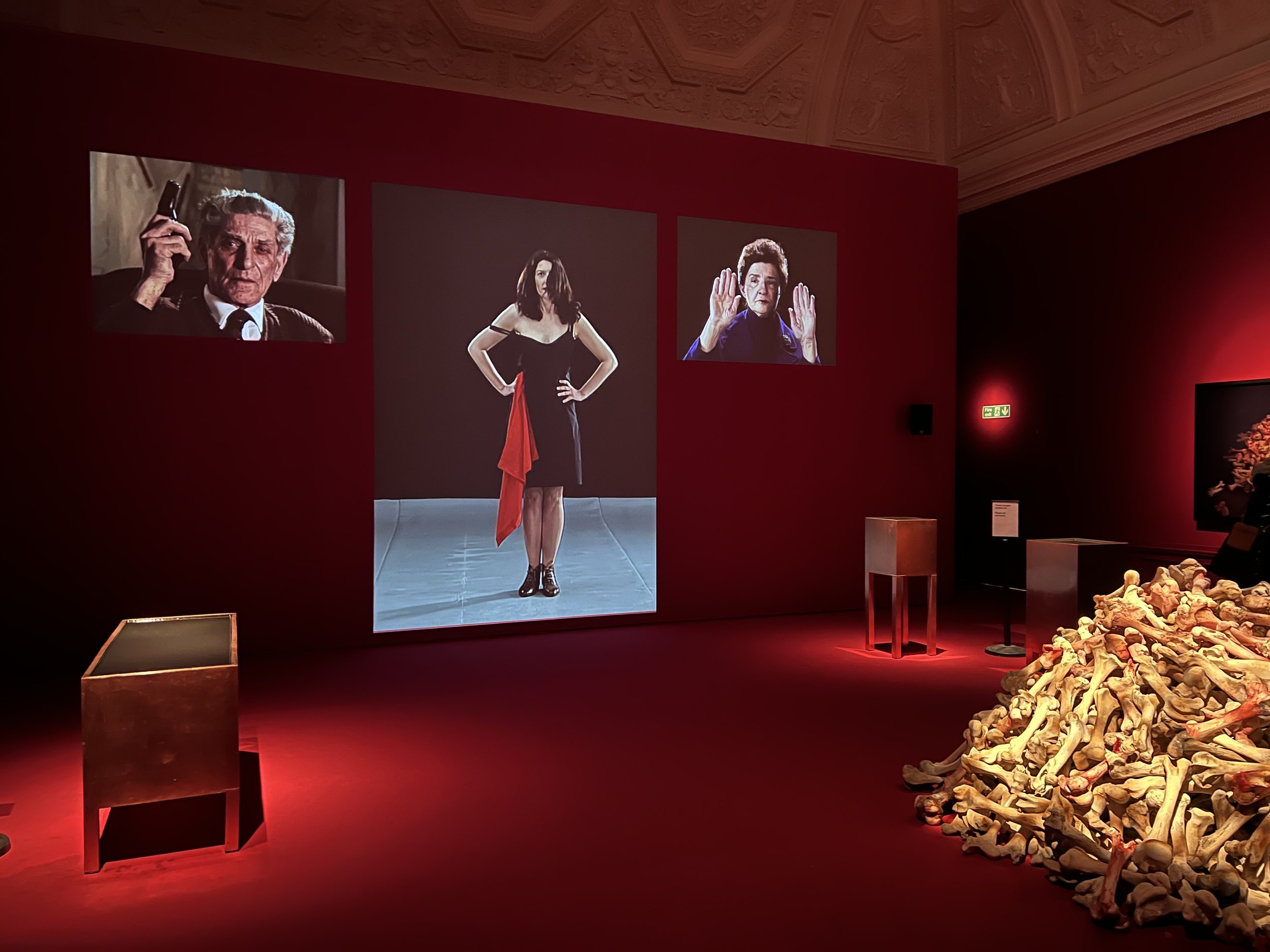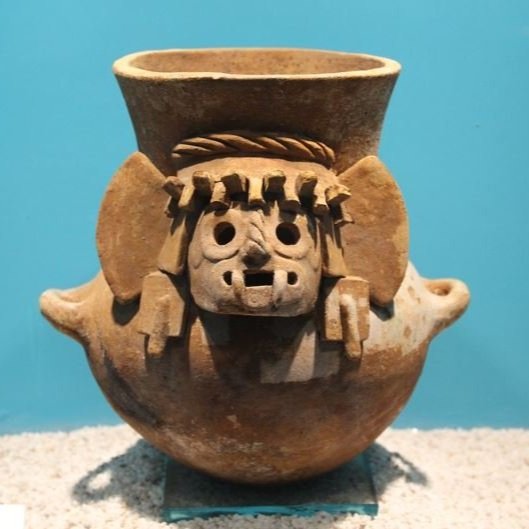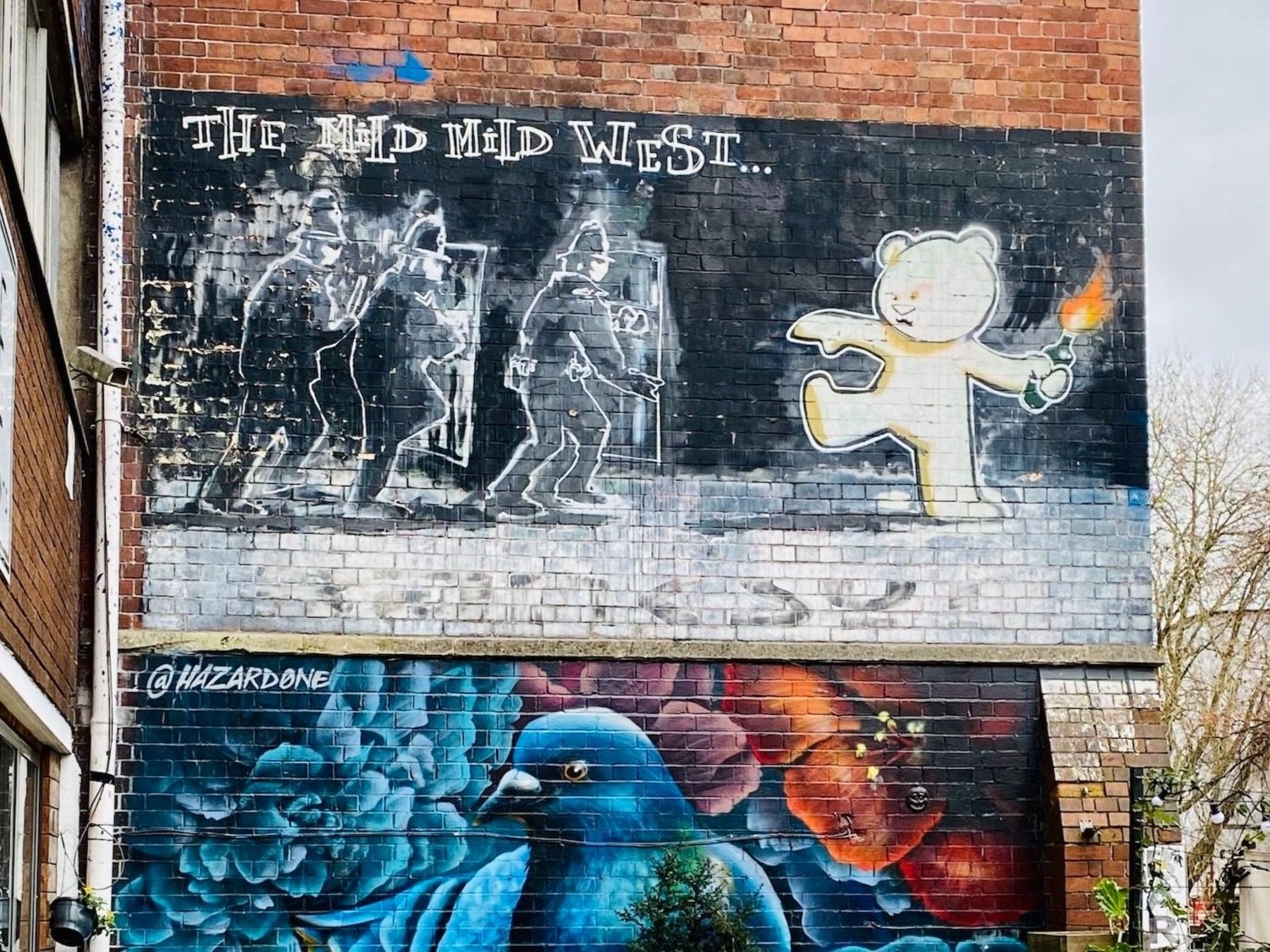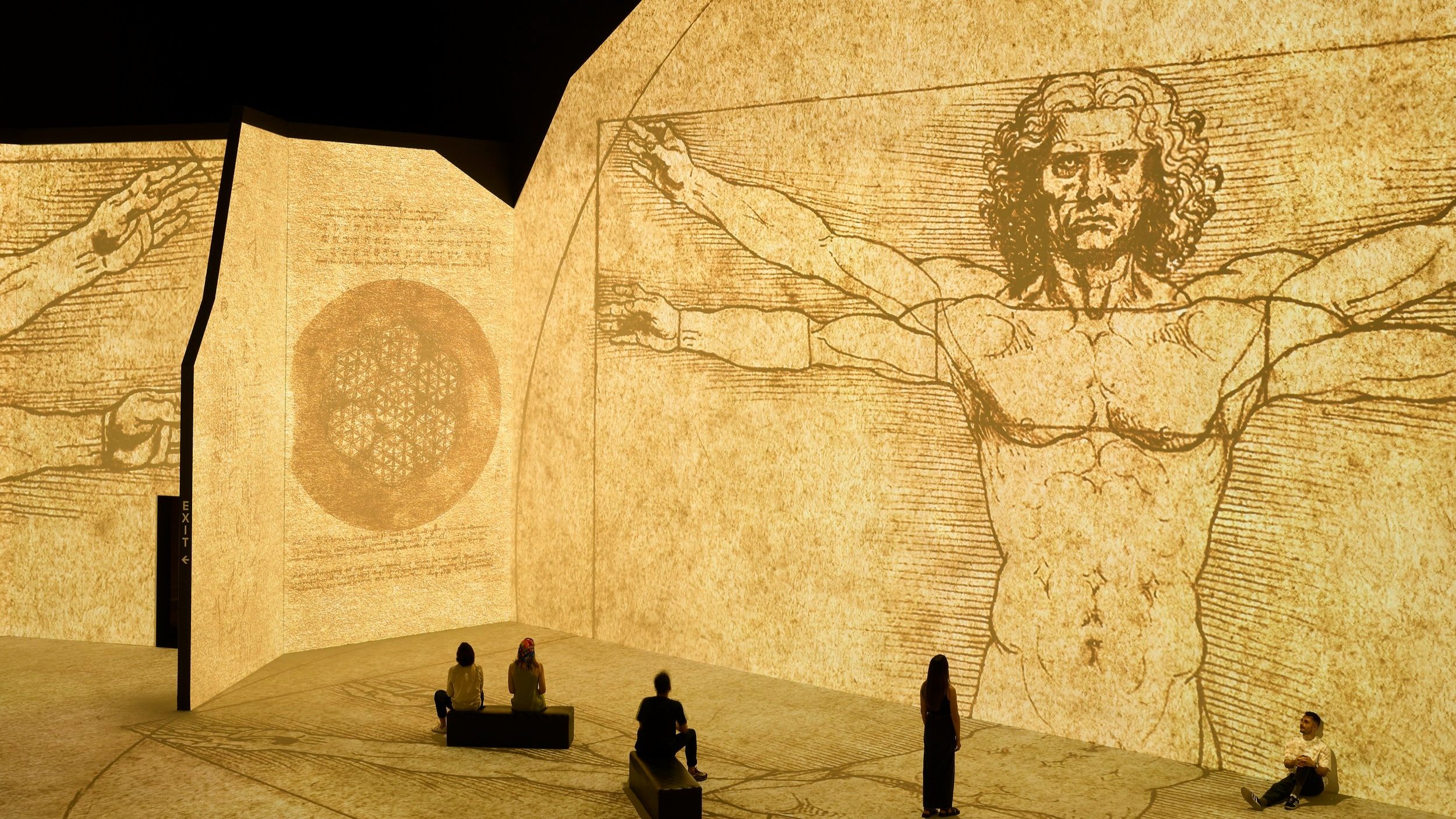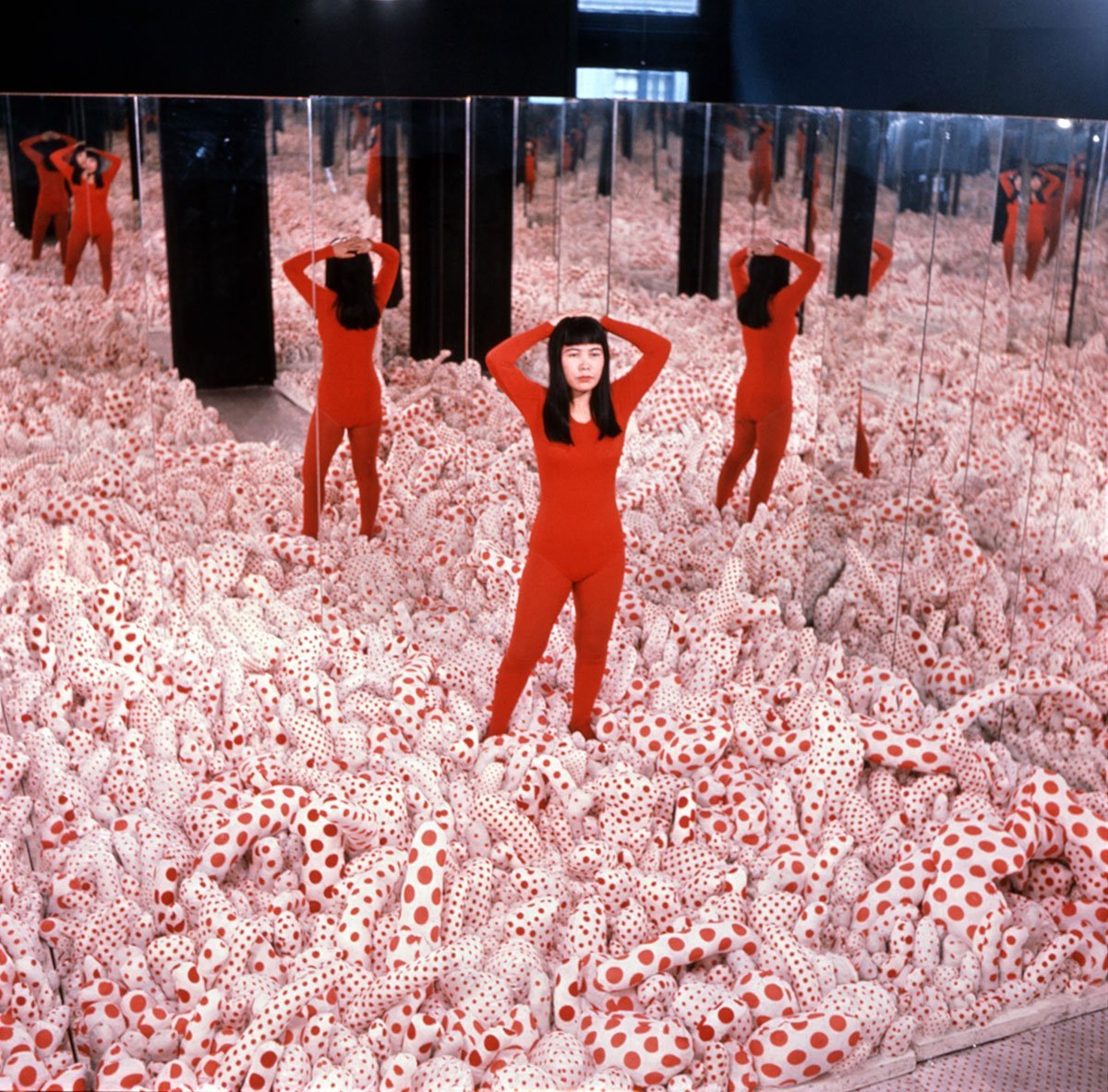When Did Contemporary Art Begin?
When Did Contemporary Art Begin? The debate surrounding the origins of contemporary art is both complex and ongoing.
While some argue that it began in 1989 with significant global events like the fall of the Berlin Wall and the Tiananmen Square protests, others point to earlier periods such as the 1970s, the end of World War II in the 1940s, or even as far back as the 1910s.
Understanding the beginning of contemporary art involves exploring various perspectives and historical milestones. Read on to as we answer the question When Did Contemporary Art Begin?
Table of Contents
1. Defining Contemporary Art
Contemporary Art vs. Modern Art
To understand when contemporary art began, it's crucial to distinguish it from modern art.
A Picasso painting at City Hall, Thun, Switzerland - CC Andrew Bossi
Modern art typically refers to the period from the late 19th century to the mid-20th century, characterised by movements such as Impressionism, Cubism, and Surrealism. These movements were revolutionary for their time, breaking away from classical traditions and emphasising innovation and individual expression.
Centro Andaluz de Arte Contemporáneo, Seville
In contrast, contemporary art refers to art created from the mid-20th century onwards, often reflecting current social issues and embracing a variety of styles and mediums.
Contemporary art is marked by its diversity and its focus on challenging traditional boundaries and exploring new ideas.
Evolution of Art Terminology
The term "contemporary art" began to replace "modern art" post-1960s, reflecting a broader and more inclusive approach to art.
This shift corresponded with the decline of modernism and the rise of artistic pluralism in the 1970s, allowing for a diversity of styles and expressions.
Unlike modern art, which was often associated with specific movements, contemporary art is characterised by its lack of a single, defining style.
2. Contemporary Art: Historical Milestones
Early Influences (1910s - 1940s)
Abstract Expressionism
Jackson Pollock at Art of the Century
Abstract Expressionism, emerging in the 1940s and 1950s, is often cited as a precursor to contemporary art.
Artists like Jackson Pollock, Mark Rothko, and Willem de Kooning focused on expressing emotion and abstraction, paving the way for future movements. This movement was significant for its departure from representational art and its embrace of spontaneity and improvisation.
Key Characteristics:
Large-scale canvases
Emphasis on the act of painting as an essential part of the finished work
Focus on personal expression and emotional intensity
Impact of World War II on Art
The end of World War II in 1945 brought a profound shift in artistic perspectives. The aftermath of the war led to new forms of expression and the questioning of traditional art forms, setting the stage for contemporary art's development.
The devastation of the war and the political changes it brought about had a significant impact on artists worldwide, leading to new themes and approaches in art.
The 1960s: A Transformative Decade
Pop Art
Roy Lichtenstein
The 1960s saw the rise of Pop Art, led by figures such as Andy Warhol and Roy Lichtenstein. This movement blurred the lines between high art and popular culture, incorporating imagery from advertising, comic books, and everyday objects.
Pop Art challenged traditional notions of what art could be and brought art into the realm of the everyday.
Key Characteristics:
Use of mass-produced commercial goods and media imagery
Bright colours and bold graphics
Commentary on consumer culture and mass media
Minimalism
Minimal Art in Haags Gemeentelijk Museum
Minimalism, with artists such as Donald Judd and Agnes Martin, focused on simplicity and objectivity, stripping art down to its essential forms. This movement further expanded the boundaries of what art could be, emphasising the idea that art could be an object of contemplation and that the experience of art was subjective.
Key Characteristics:
Geometric shapes and clean lines
Use of industrial materials
Emphasis on the physical space and the viewer’s interaction with the work
Pluralism in the 1970s
Rise of Pluralism
The 1970s marked the rise of pluralism in art, as the decline of modernism gave way to diverse artistic styles.
Artists began exploring a wide array of styles and mediums, breaking away from the rigid structures of modern art. This period saw the emergence of various movements and the rejection of the idea that art should follow a single, unified direction.
Key Characteristics:
Acceptance of a variety of styles and approaches
Emphasis on individual expression and diversity
Incorporation of different cultural perspectives and influences
Emergence of New Mediums
During this decade, new mediums such as conceptual art, performance art, and other experimental forms emerged, further broadening the scope of contemporary art. Artists began to use their bodies, everyday objects, and even language as mediums, challenging the traditional boundaries of art.
Spiral Jetty by Robert Smithson. 1970
Conceptual Art: Focused on ideas and concepts rather than aesthetic objects. Key figures include Sol LeWitt and Joseph Kosuth.
Performance Art: Emphasised the artist’s physical presence and actions. Key figures include Marina Abramović and Yoko Ono.
Installation Art: Created immersive environments that engaged the viewer’s senses. Key figures include Christo and Jeanne-Claude and Robert Smithson.
3. Contemporary Art and the 1989 Debate
Fall of the Berlin Wall
The fall of the Berlin Wall in 1989 symbolised a shift in global politics and culture, influencing contemporary art’s thematic and geographical scope.
This event marked the end of the Cold War and opened up new avenues for artistic expression. The reunification of East and West Berlin brought about a surge of artistic activity and collaboration, reflecting the new political and social realities.
Key Themes:
Freedom and liberation
Reunification and reconciliation
Exploration of identity and memory
Tiananmen Square Protests
The Tiananmen Square protests of 1989 highlighted the global struggle for freedom and human rights, themes that permeate contemporary art.
These events had a profound impact on artists worldwide, inspiring works that reflect social and political issues. The bravery of the protesters and the tragic outcome of the events have been depicted and referenced in numerous artworks.
Key Themes:
Human rights and political freedom
Protest and dissent
The power of the individual against oppressive systems
4. Contemporary Art Perspectives from Different Regions
American Perspective (1960s)
In the American context, the 1960s are often viewed as the starting point of contemporary art.
This period was marked by the rise of movements like Pop Art and Minimalism, which challenged traditional notions of art. The vibrant cultural scene in cities like New York helped to foster new ideas and collaborations among artists.
Key Figures:
Andy Warhol
Roy Lichtenstein
Donald Judd
German Perspective (1945)
Many German art historians and critics consider 1945, the end of World War II, as the beginning of contemporary art.
The cultural and political upheaval of this period significantly influenced artistic expression. The division and subsequent reunification of Germany provided a unique context for artistic exploration and reflection.
Key Figures:
Gerhard Richter
Joseph Beuys
Anselm Kiefer
5. Mediums in Contemporary Art
Traditional Mediums vs. New Mediums
Centro Andaluz de Arte Contemporáneo, Seville
Contemporary art encompasses a wide range of mediums, from traditional painting and sculpture to digital art and installations.
Centro Andaluz de Arte Contemporáneo, Seville
This diversity reflects the era’s dynamic and inclusive nature. Traditional mediums have been reinterpreted and combined with new technologies, creating innovative and thought-provoking works.
Traditional Mediums: Painting, sculpture, drawing
New Mediums: Digital art, video installations, interactive art
Interdisciplinary Approaches
Many contemporary artists blend various mediums and techniques, creating interdisciplinary works that challenge and expand the definition of art.
Centro Andaluz de Arte Contemporáneo, Seville
This innovative approach allows for greater experimentation and expression. Artists often collaborate with professionals from other fields, such as science, technology, and performance, to create multifaceted works.
Examples:
Olafur Eliasson’s immersive installations combining art and environmental science
TeamLab’s digital art projects that engage viewers interactively
Laurie Anderson’s multimedia performances blending music, video, and storytelling
6. Artists’ Perspectives on Contemporary Art Beginnings
Including insights and quotes from contemporary artists can provide valuable perspectives on when contemporary art began.
Many artists view the transition from modern to contemporary art as a gradual process influenced by historical and cultural shifts. Their personal experiences and observations offer a deeper understanding of the era’s complexities.
Presenting case studies of artists who exemplify this transition can illustrate the evolving nature of contemporary art. These examples highlight the diverse approaches and themes that characterise the contemporary art era.
Case Study 1: Gerhard Richter
Known for his abstract and photorealistic paintings, Richter’s work spans the divide between modern and contemporary art.
His October 18, 1977 series reflects on the political and social turmoil of the 1970s, showcasing the depth and complexity of contemporary themes.
Case Study 2: Yoko Ono
A pioneer of conceptual and performance art, Ono’s work challenges traditional art forms and emphasises the role of the viewer in creating meaning.
Her Cut Piece performance invites audiences to interact with the artist, breaking down the barriers between art and life.
Case Study 3: Ai Weiwei
As a prominent contemporary artist and activist, Ai Weiwei uses his art to address political and social issues.
His installation Sunflower Seeds, composed of millions of hand-painted porcelain seeds, critiques mass production and the loss of individuality in contemporary society. This work also reflects on China’s Cultural Revolution and its impact on the artist’s life.
Marina Abramović at The Royal Academy of Art, London in 2023
Case Study 4: Marina Abramović
Marina Abramović is a key figure in performance art, known for her endurance-based works that test the limits of physical and mental boundaries.
Her piece The Artist is Present at the Museum of Modern Art involved sitting silently with individual viewers, creating an intimate and profound connection through shared presence and gaze.
7. My Final Thoughts on When Contemporary Art Began
Defining the exact beginning of contemporary art remains elusive, underscoring the complexity and richness of this artistic era. Whether one considers the 1940s, 1960s, 1970s, or even 1989 as the starting point, it is clear that contemporary art is a product of numerous historical, cultural, and social influences.
Its ongoing evolution makes it a fascinating and dynamic field, continually challenging and redefining the boundaries of art.
Contemporary art’s diversity and inclusivity reflect the pluralistic nature of the modern world.
By exploring the various perspectives and historical milestones that have shaped contemporary art, we gain a deeper understanding of its nature and its enduring significance in our cultural landscape.
I hope you have found this blog post about Contemporary Art interesting and enjoyable. To find out more about some of the art movements and great artists, read here:
If you have any questions or comments, i would love to hear them, please email me at sarahransomeart@gmail.com.









